The record labels created by Eldred Stebbing and his brother Phil at the start of the 1950s have endured now for almost 70 years, and in 2017 there are still releases from the Herne Bay based company on the Zodiac label, although most are now digital.
From 1957 onwards, Eldred owned the company and it is still in family hands, run by his sons, Vaughan and Robert and a team, many of whom have been with the firm for decades.
This page looks at the various printed labels found on Zodiac, Stebbing and related records, first shellac and then vinyl: 78s, LPs, EPs and 45s.
The Zodiac and Stebbing labels are as New Zealand as pavlova and just as recognisable to the generations of men and women who first purchased them new and now – just as enthusiastically – collect what are increasingly valuable records.
There were a great many variations, and whilst we have documented a large number of these, sometimes the variations were small, or just the result of printing variables, like ink and placement.
Designers are mostly unknown for the earlier labels, but Don Couldrey probably did the "gipsy" sleeve and from 1966 onwards Roger Bradley was the regular designer. Roger created the Key labels but it's unknown who created white, black and gold labels or the Zodiac Records Ltd. logo that appear on these and the late 1960s' blue sleeves.
The 78s
There were three brands used on 78s – the first Zodiac, Stebbing and the second generation Zodiacs.
Stebbing was the family name of course, and the Stebbing name can be found on transcription discs going back to the company’s founding in the mid-1940s, but the first commercially released 78s with that name came in 1949:
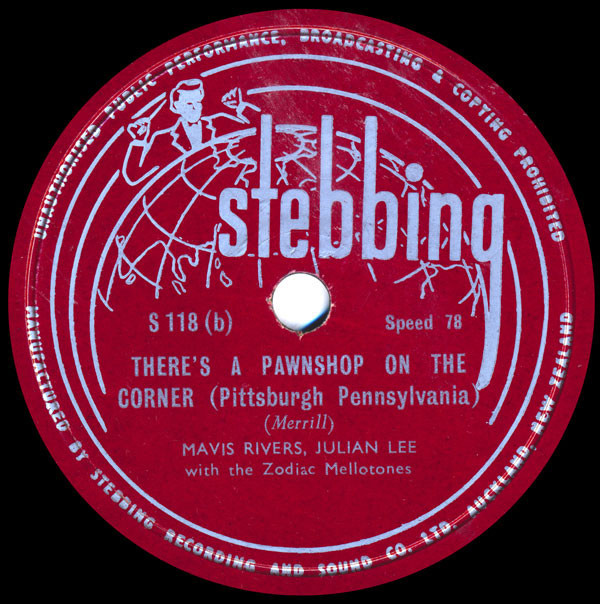
It was also yellow:
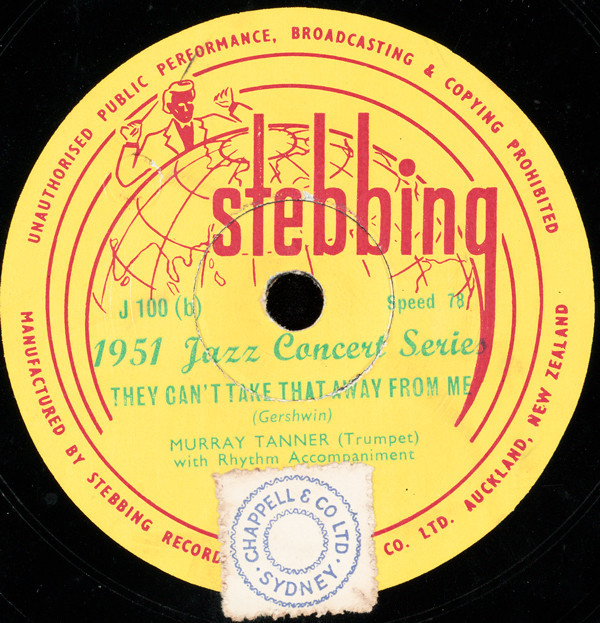
And there was a Māori Series variation:
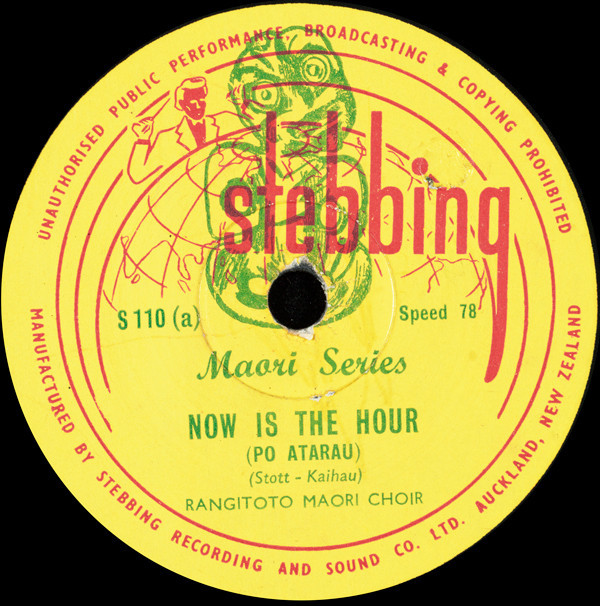
There was a green and silver Māori series too.
The Zodiac label appeared at the same time and there were at least two variations, for no clear reason.
This:

And this, which reduced the stars down the sides:
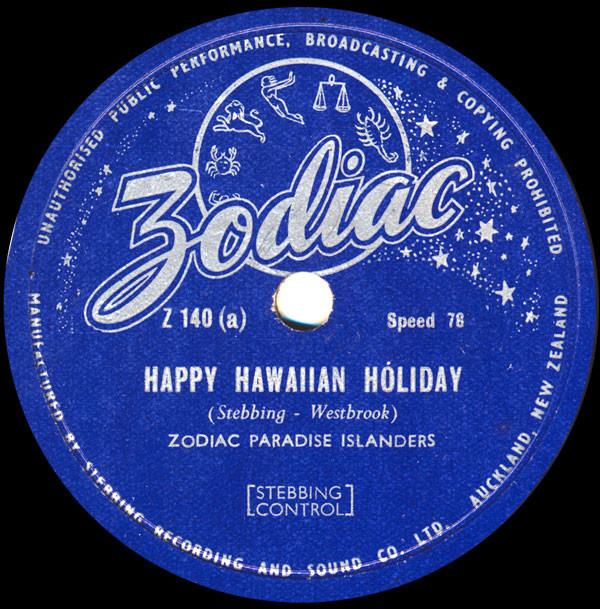
The final 78 labels were applied to the 78s released in the late 1950s when Eldred, having acquired the balance of the company from Phil, began releasing records again.
There were four releases on a new Stebbing label:

And three with a new Zodiac design. These labels were not dissimilar to the early 45s:
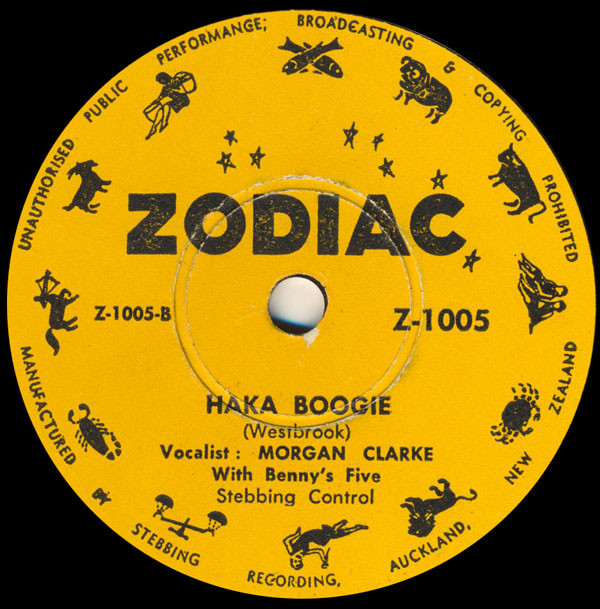
The below sleeve was used on both Zodiac and Stebbing (the blue labels) releases but the Zodiac ones also came in generic sleeves. Of interest are the addresses on the bottom. Stebbing Recording & Sound Co. Ltd. was the Stebbing company until 1965. The 78s after 1957 came in printed sleeves like the M. Wright & Co one below or simply plain sleeves.

The early transcription discs
The two discs here were early custom discs. The first of these dates to 1946 and is a direct to disc cut of Epi Shalfoon and his Orchestra:

The second is of Benny Levin and his Orchestra, from 1952:

The 45s
The Zodiac 45s began in August 1957 with this release, on the newly revived Zodiac label. A new label design clearly derived from the earlier Zodiac 78 look. These were manufactured in Ponsonby, Auckland, and distributed initially by Auckland company M. Wright and Co Ltd, then Pye's G.A. Wooller & Co. Ltd., a group that also included Festival Records, RCA and (after 1960) Allied International. The records were pressed either at Green & Hall Ltd's Grey Lynn factory (in the old Laundry Building in Surrey Crescent, a plant owned by Eldred and Phil Stebbing until they sold it to G&H in 1953) or in Wellington at the Green & Hall plant in Miramar. The Auckland plant closed around 1970 and the Wellington one was purchased by Phonogram in 1974, and renamed Music Carriers Ltd. It was again renamed as PolyGram Record Service Ltd. in late 1978.

In 1960 the label changed. Gone was the pronged centre (either four or three) and a new softer yellow was introduced.

1961 saw the style of artist information change. Prior to that, the artist was identified as per the style on old 78s, with performers and vocalists, often in very small type. From 1961 the labels featured the main artist more – pop style – and the colour was a richer yellow.

1963 saw the label that would define Zodiac until 1965, white with purple shadowed text. The catalogue number sat above the logo on the first releases. It first appeared on Anne Murphy's ' Back In Baby's Arms (Z45/1108):

In late 1964 the catalogue number was moved under the logo, the white became a little less pure (probably the paper stock) and the shadow was made bolder (this darkening was an ongoing process until these labels disappeared in 1965):

The Australian label from the same period. In Australia, Philips distributed Zodiac. This colour was on 9 singles released in 1964:

In April 1965, Eldred Stebbing set up a new company, Zodiac Records Ltd., to handle his releases and his recording studio (then in Saratoga Ave, Herne Bay). Sometime before the introduction of the company the label changed, most likely in December 1964, despite the fact that company name was still not registered. Gone was the white and purple label, it being replaced by white and orange text on a black background with the new company name on the bottom. For much of early 1965 singles appeared on either or both labels as stock of the old white labels was run down. Some earlier singles were re-pressed on this label:

The Australians used a variation of this label with all orange logo text. These were only seen in late 1964 and from 1965 the familiar orange/white version was seen. There were 33 Australian 45s in this AZ serieswith the last being issued in late 1966. This is the orange version:

In June 1968, the next major change in the Zodiac labels arrived, with the signs of the zodiac motifs discarded forever and a simple gold and white label, more modern in style and including the newly designed Zodiac Records Ltd. logo. This would be the final Zodiac single label, lasting through to the end of the 45 era in 1974:
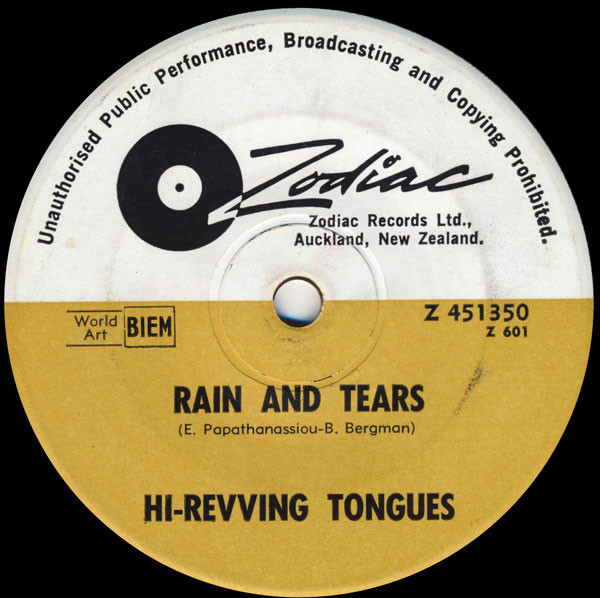
There were a variety of tones on the bottom half over the next few years, from an almost garish yellow to a softer gold, seemingly at the whim of the printers:
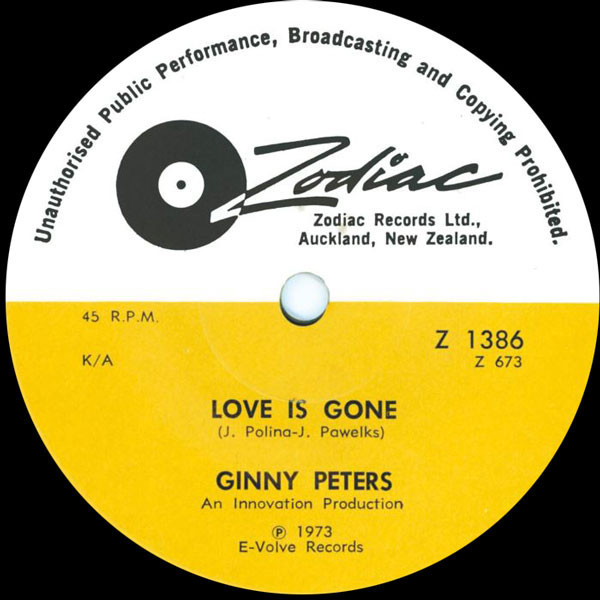
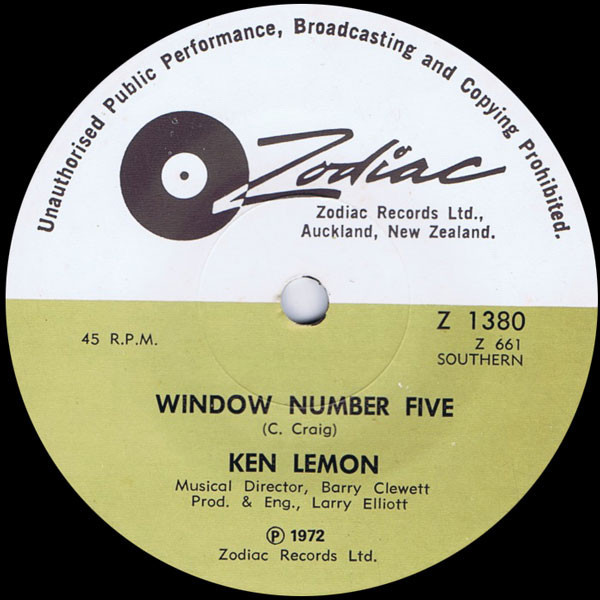
In Australia, it had a more bronze look. There were five singles in this ZF series, released in 1968 and 1969:
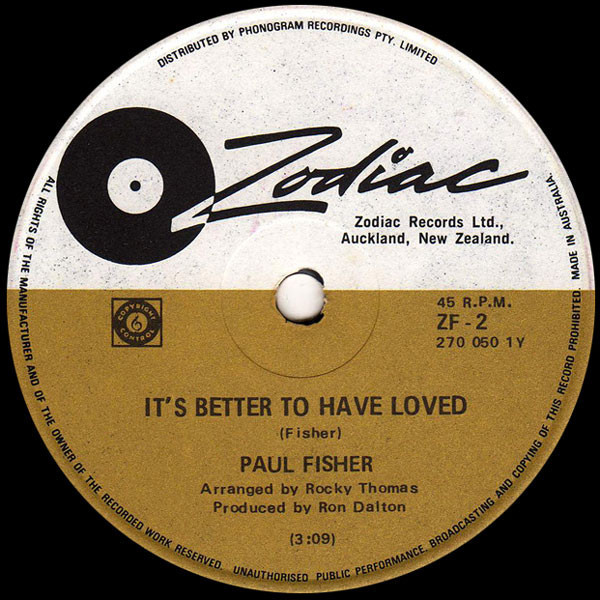
The 45s on sub-labels
Zodiac International
This label had two lives. The first one was used for releases by The (Australian) PleaZers only, probably to accentuate the fact they were signed from offshore:

The second Zodiac International label was for licensed releases later in the 60s and into the seventies. Notable amongst these were James Brown records licensed from King Records in the US. Oddly on this 45, James’ name was not printed. Surely an oversight that slipped through:

Zodiac Icon
This label was a joint venture between Eldred Stebbing and entrepreneur Dave Dunningham who managed The Keil Isles. It released seven records in 1960 and 1961. There were two variations, the four-pronged version and the solid centre, seen here:

Philips
Zodiac released several selected artists licensed via Philips between 1965 and 1968. The two 45 labels were the lined version and the cleaner one with bolder type (1968):
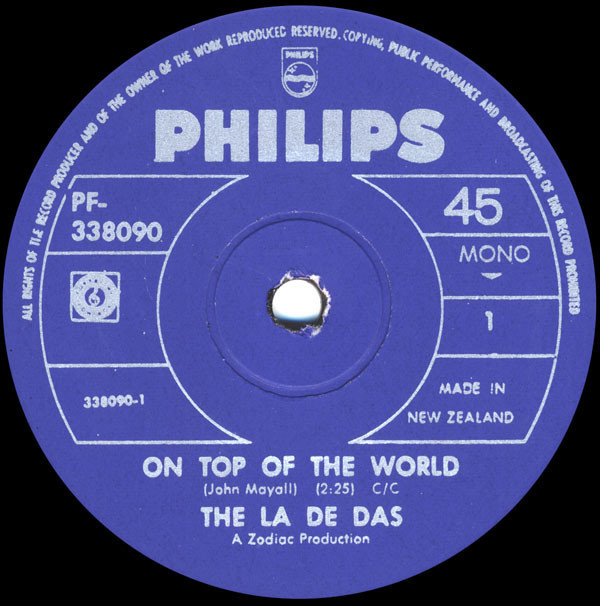

In Australia, six singles were issued in 1967-68 on a joint Philips/Zodiac brand:

Key
In 1974 Zodiac was retired as a rock/pop label (it would still issue several albums in future years) and replaced in 1975 by Key, although the label was never as prolific as Zodiac. There were two label variations, although it was more of a printing variation. The LPs used the same label. Distribution was first via Pye, then briefly WEA, before ending up at Festival where the label had its greatest success:


Viscount
Zodiac’s largest associated label had a life before Zodiac. Gary Daverne was Eldred’s cousin and he started his Viscount label in 1963 via Allied Universal Productions Ltd. This was the pre-Zodiac label:

They released five singles before Eldred took the label under his wing later that same year. The pair created the new Zodiac Viscount imprint. There were several label variations. The first was a soft green text on white:

The second and third used quite different shades of green:


On the fourth, in 1965, the zodiac imagery was so faint it could hardly be seen:

Viscount was reintroduced in early 1966 and appeared this way until 1968 when Gary left New Zealand for a very distinguished international career as a conductor. The label continues today as a vehicle for his recordings and reissues:

The EPs
EPs (extended play 45s with four or more tracks) were a big thing in the 1950s and 1960s, disappearing largely in the 1970s. They provided strong moneyspinners for labels and were less of a risk than a full LP.
The first Zodiac EP label was a green variation of the 45 label. It came in a variety of shades of green, and also appeared in both pronged and solid centre versions:



In 1963, it was replaced with an EP version of the new white 45 label:

In 1965 when the 45s went black, the EPs went shades of green again:

This was a one-off for a 1966 drivers license double EP issued with the AA and the Traffic Dept of Auckland City:
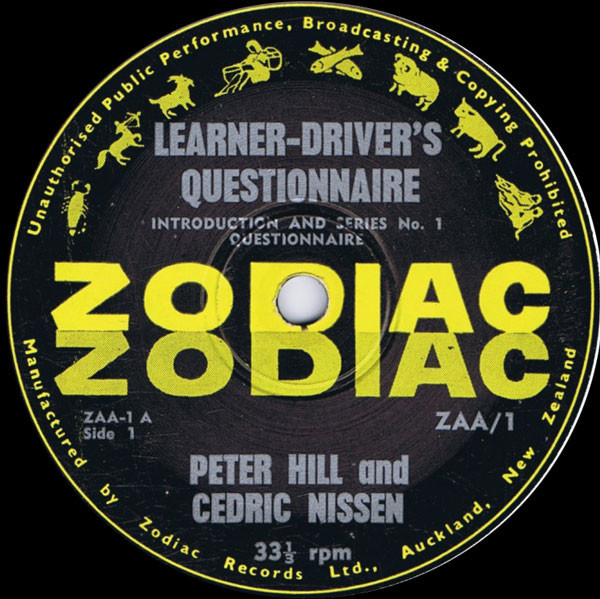
In mid-1968, the EPs (there were now fewer) went white and gold (as per the 45s):

The sole Viscount EP used the same label as the 45s:

The LPs
The earliest Zodiac LPs were not issued on the Zodiac label, but on the Stebbing label, with the Zodiac imprint initially being reserved for 78s, singles and EPs. The green on yellow label design was later used by Stebbings for custom, paid-for, releases:
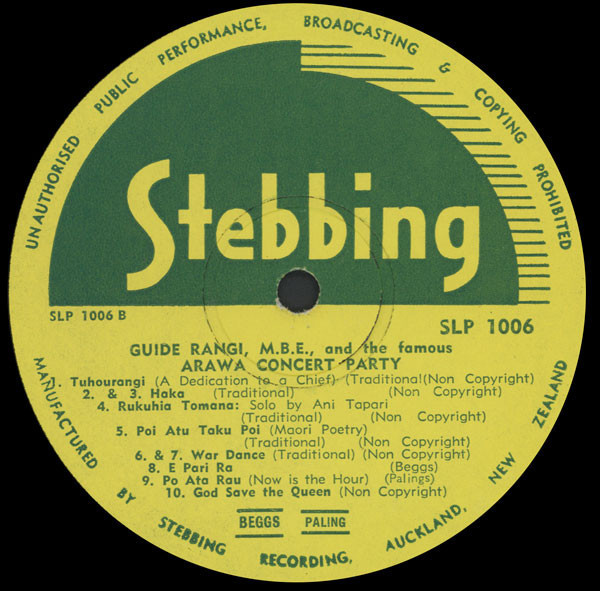
In 1960 the first Zodiac LPs were issued, with a design that remained in use until 1968 (even with the Stebbing Recording line on the bottom, legally defunct after 1965). However, the colour changed often. Green, purple, blue and dark purple, and shades therein, all appeared over the years:




Next came an interim label in 1967-68 with Stebbing Recording replaced by Zodiac Records Ltd. on the bottom:

In 1968 the LP labels changed to white and blue. This would stay until the label was replaced by Key in 1975:
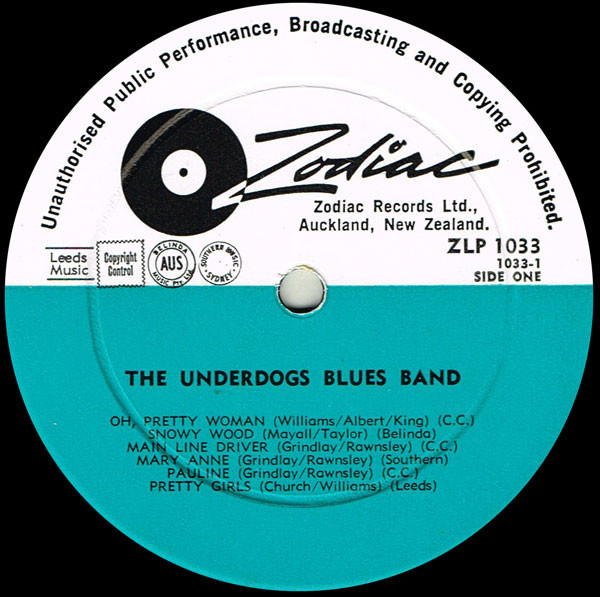
The Philips albums came in both black and very dark green labels. There may have been lighter green labels too. Some were later reissued on the last Zodiac label (both the below included):


The 45 covers
Until 1963 the singles mostly came in plain white sleeves, although some were printed and had M. Wright & Co's names (the distributors).

In 1962 the new Zodiac sleeves were introduced and these continued until 1966. They came in a wide variety of colours, including green, very dark blue-black, purple and red. The designer is unknown but is likely Don Couldrey:

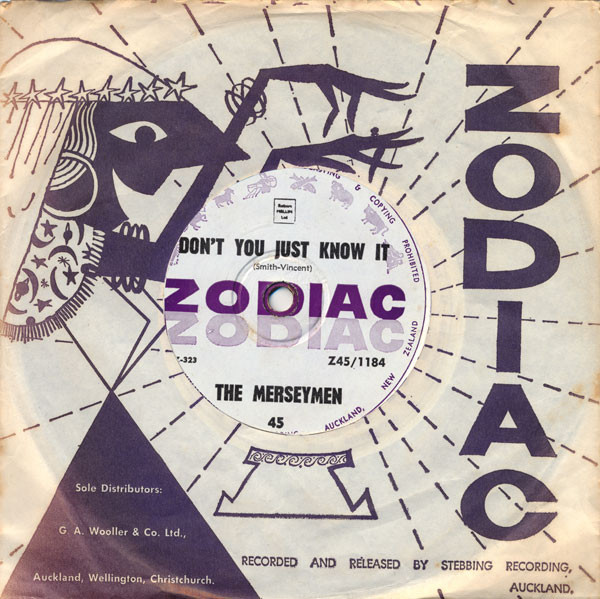

In late 1966 the final custom sleeves arrived, with the new Zodiac logo (this would not appear on the records themselves until 1968):

The cost of these (and perhaps then some) was covered by one side having a full side advert for Pan Am (HMV did similar things with Air New Zealand, whilst Viking strategically placed aircraft and logos on their album covers, as did Zodiac):

The final Zodiac sleeves, aside from a few artist sleeves, were plain white bags.
–
Thank you to Glenn Evans, Chris Bourke, Mark Matheson and Alan Galley.